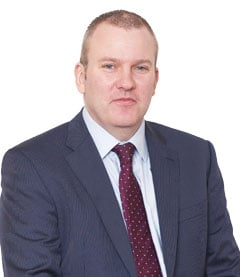
The key to digital disruption in the audit industry is standardisation. Standardised inputs, procedures and outputs not only ensure consistency and reliability throughout the audit process, but also enable automation opportunities. Furthermore, they also enable companies – eventually – to being able to deploy AI in the audit lifecycle.
By leading a standardised process, Grant Thornton is pioneering the next generation of auditing. We’re transforming traditional practices and manual workflows into streamlined, efficient and insight-driven procedures that deliver tangible value in the audit cycle to our clients.
Like any business facing audit, our clients want a seamless and valuable audit experience. We seek to provide that by optimising data acquisition, integrating advanced technologies and standardising processes.
Read on to explore how our approach to process, data, technology and people is transforming private equity audits and delivering significant benefits to our clients.
Process
Standardisation and improved data quality
To achieve quality and efficiency in any industry, you need standardised and optimised processes. Professional services – audit in particular – is no different.
By adopting uniform procedures across our firm, Grant Thornton ensures consistency and reliability in how we audit. For example, to generate output such as audit work programmes, lead schedules, NAV-based fees testing and portfolio investments testing, we must use a standardised approach to deliver high quality work quickly.
Our approach to productisation
We start by designing the final output and then work backwards through each step in the process before ending at the first step, which is data acquisition. This means we can assess each step to ensure it contributes to delivering a quality product with minimal manual touchpoints. An automated process leads to consistency and consistency. That in turn should lead to a quality audit product.
This standardisation is crucial for improving data quality, which in turn enhances overall operations. For example, Grant Thornton has optimised its processes internally to be tech-ready from an audit standpoint.
This includes adopting a data-first mentality, such as using data to carry out risk assessments and streamlining manual work through automated audit workpaper generation. By ensuring these processes are standard across the firm, we can ensure we conduct every audit efficiently and accurately, making the resulting audits more reliable.
Our clients and the fund administrators we work with benefit from these improvements by experiencing fewer disruptions and smoother audits. Ultimately, that saves time and reduces hassle – music to anyone’s ears.
Data
Streamlining data delivery
The data delivery lifecycle encompasses everything from data acquisition through to generating audit-ready products. These can include portfolio testing, unusual items/journal testing or NAV-based fees, for example.
The cycle has four critical components:
- Data acquisition: Administrators should provide data in the same format every time, APIs and database connections are preferred. A blanket strategy is ideal here, but even an agreement with each administrator can enable it.
- Common data model: This topic is broad, but in this context, it relates to a predefined schema being set up for each dataset being ingested and each output being generated. For example, data coming from two different administrators may be in a different format and under a different schema. A common data model provides the template to map these different datasets against a standardised Grant Thornton model to create commonality.
- Data transformation: An automated approach is required to get source data acquired from an administrator’s systems and transform it into our predefined common data model.
- Product generation: Once data is transformed into the common data model format, audit-ready products can be generated and passed over to audit teams.
An optimal data-driven process reduces the burden on audit teams, administrators and investment managers. Crucially, it also enhances our clients’ experience by enabling us to deliver an efficient and high-quality audit.
Effective data acquisition is at the heart of a successful audit. Grant Thornton works closely with fund administrators to streamline the data-sharing process, ensuring all information needed is readily available and accurate. This involves partnering with fund administrators and investment managers, using APIs or database connections to facilitate seamless data exchange.
By streamlining data sharing, we minimise the time and effort needed to gather and verify information for all fund administrators and clients. This makes the audit process more efficient and enhances data accuracy and completeness. In turn, that leads to more insightful and valuable audit testing.
Technology
Gtap: the power of advanced technology solutions
Grant Thornton's automated analytics platform, Gtap, is a disruptor in the audit industry. Gtap integrates streamlined processes and standardised data to deliver advanced technology solutions that generate outputs such as:
- automated audit work papers
- AI-powered analytics
- automated reconciliations
- pricing
- NAV per share insights, and
- much more.
Gtap's capabilities enable auditors to focus on higher-value tasks, such as analysing trends, unusual items and identifying risks, rather than spending time on manual data entry and reconciliation. The platform's automation and AI features enhance efficiency and accuracy, giving clients and fund administrators a more thorough and insightful audit experience.
People
Bringing people along in the transformation
We should be under no illusion that professional services, including audit, is going to change significantly due to AI. That means people, rightly, are concerned about their jobs, how they will change and if they will exist at all in future.
The most critical tasks of any audit are those that involve exercising judgement. It’s hard to see a short- or even medium-term future where anyone other than an audit team member is accountable for judgement. AI will play a key role in many other tasks and enable audit teams to focus on what truly matters while giving them the best possible tools to do so.
Technology alone cannot drive transformation – it needs the support and engagement of people. Culture trumps strategy. That’s why a people-first culture that gives everyone a say in how the future is shaped is an effective way to increase the odds of adoption when a new product is rolled out or enhanced. The most cutting-edge technology won’t make a dent if your people don’t adopt it or use it to its full potential.
Grant Thornton operates a Tech & Innovation Committee to set the vision for our audit practice and a Tech & Innovation Working Group to ensure our vision becomes a reality. These groups focus on how we use technology to attract and retain the best talent, and how we train them and keep them ahead of the curve.
By fostering a culture of continuous improvement and innovation, we ensure our people are ready to embrace change and drive value for clients. This commitment to people helps make us a trusted partner for clients and fund administrators seeking to optimise their audit processes.
Maximising your return on investment
A focus on standardisation optimises your return on investment from people, process, technology and data, regardless of industry. The obvious outcomes are efficiency and quality, but you also gain clear benefits around both employee and customer experience.
By focusing on our four pillars as set out above, Grant Thornton was able to deploy Gtap with great success; the result being over 45,000 outputs in a seven-month period.
Process standardisation, efficient data acquisition, cutting-edge technology and people development have proven to be the key ingredients enabling us to deliver a seamless audit experience.
By working with us, our clients and fund administration partners can save time, reduce risks and gain deeper insights, overall meaning the enhance their audit practices and drive efficiency and value.


